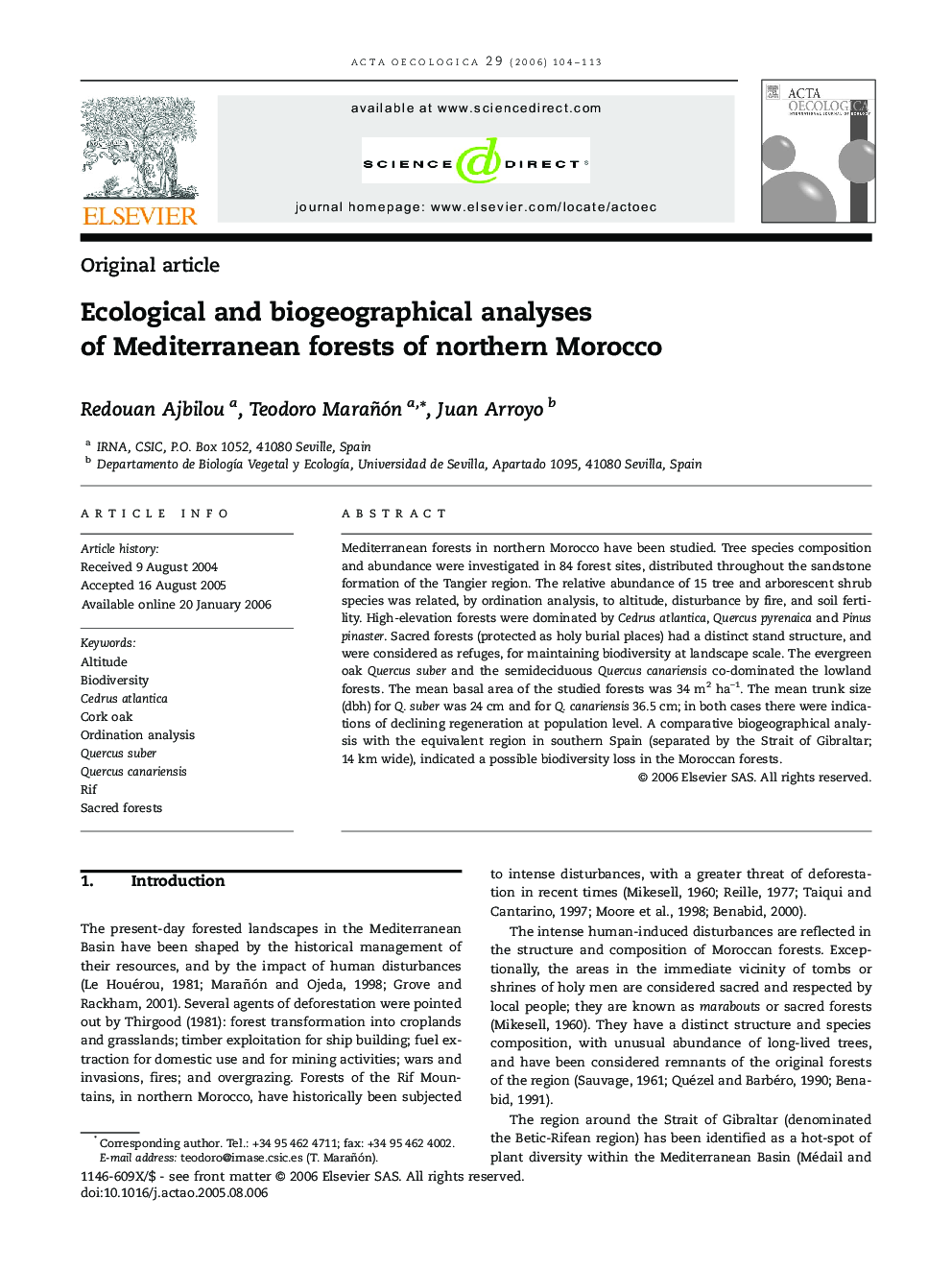| Article ID | Journal | Published Year | Pages | File Type |
|---|---|---|---|---|
| 4381413 | Acta Oecologica | 2006 | 10 Pages |
Mediterranean forests in northern Morocco have been studied. Tree species composition and abundance were investigated in 84 forest sites, distributed throughout the sandstone formation of the Tangier region. The relative abundance of 15 tree and arborescent shrub species was related, by ordination analysis, to altitude, disturbance by fire, and soil fertility. High-elevation forests were dominated by Cedrus atlantica, Quercus pyrenaica and Pinus pinaster. Sacred forests (protected as holy burial places) had a distinct stand structure, and were considered as refuges, for maintaining biodiversity at landscape scale. The evergreen oak Quercus suber and the semideciduous Quercus canariensis co-dominated the lowland forests. The mean basal area of the studied forests was 34 m2 ha–1. The mean trunk size (dbh) for Q. suber was 24 cm and for Q. canariensis 36.5 cm; in both cases there were indications of declining regeneration at population level. A comparative biogeographical analysis with the equivalent region in southern Spain (separated by the Strait of Gibraltar; 14 km wide), indicated a possible biodiversity loss in the Moroccan forests.
